The time has come for the sentimental category of the KonMari method. I started with my collection of childhood toys.
I only recently realised, with clarity, that ‘sentimental items’ is what these actually are. I may tell myself I’m keeping them for my children, but that’s not the real truth. The KonMari method requires identifying which things are yours and which aren’t, and I realised in the process that these old toys are really my own. I needed to take responsibility for them as my own belongings.
I started by getting them all out on the bed. I also tried to be nice to myself, anticipating that this would be difficult and perhaps sad. I got a drink, some peanut butter cups, and my slippers.
It surprised me how many things – although they had survived many a previous cull – I actually felt nothing for. That is, I had no deep connection to them in the present. I had pleasant memories surrounding them, but the objects themselves no longer spoke to me.
Quite a few old plastic toys emerged from their boxes with a distinct, old-plastic smell. In fact, although I loved many of them, I realised that they weren’t something I really relished handing on to my children. Once again, I had happy memories connected to these things, but they themselves no longer sparked joy.
Some things did really spark joy, though. I was surprised by the pleasure I got from a little tin, shaped like a house, which my mom had given me when I was little. It hinges open to show a tiny interior, like a dollhouse. I loved the way it felt in my hand, the wonderful Britishness of the house itself, and the details in the painted rooms inside.
I kept this, because it brings me joy and encapsulates many of my feelings toward my childhood. I think I may find a use for it somewhere, or tuck it into a drawer or my closet so I can enjoy it.
Was this process as hard as I anticipated? (What with my chocolate and slippers and all.) Actually, no. Or not hard in the way I feared. It was a lot of work, just the labor of sorting small items and going through them one at a time, and it takes a lot of energy. However, there was no horrible wrenching myself away from things; no desperate clinging to things and fighting with myself to let them go. Everything that I did let go, I freely acknowledged that I was finished with. One beauty of the KonMari method is its tremendous respect for people and their feelings. You don’t have convince yourself, argue with yourself, or listen to the reasoning of anyone else, nor ever override your feelings. I found that when I attended honestly to my feelings about the object in my hands, I knew what I wanted to do with it, and I was able to discard many things without any trauma at all.
Now, moving on from toys proper, I had a collection of miniatures. I had to deal with these in a second session, because I really ‘lost the joy’ at this point. That is, I felt overwhelmed and unable to perceive how I felt about anything. So I took a break and resumed my tidying in the evening.
The picture below is of a room box I made. It is wired with an electric light which I made, and I designed and cut all the wood for the paneling and floorboards. I built the chimney breast, marbeled the fireplace with paint and sculpted the fireback to look like burnished iron.
This is obviously beyond the realm of toys and into the realm of hobbies – I was in college when I made this one summer. It is truly gorgeous, and I filled it with period furnishings made from kits and from scratch.
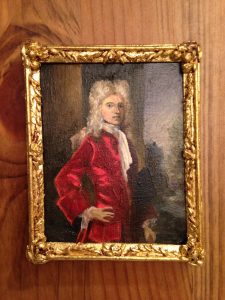
It was painful to admit, but I needed to get rid of that roombox. Not because I didn’t like it, because it was beautiful, but simply because that isn’t my hobby right now. Having it made me feel guilty for not taking care of it. And if I do wish to take up miniatures again at age 65, I’ll probably enjoy starting over, because making the things is most of the fun.
As I went, I took a lot of photos, both of things that gave me joy and those I planned to discard. I’ve found that photographing the items I discard helps ease the initial anxiety of letting go, because most of the anxiety is a fear of forgetting happy memories. A photograph of the item will supply all the fodder for memory that I need. Later, I do sometimes discard these photos as well, usually a sign that I wasn’t as attached to the item as I thought. But if I want the photos, I keep them in a folder together to look at and reminisce any time I want.
In the end, I was left with a brown file box of toys, a small photo box of miniatures, and one doll in her own box. I have so elegantly put a yellow frame around them in this picture, so you can see how much space they take up in the closet. I am quite happy with that.
The next set of sentimental items to go through is general memorabilia and papers.
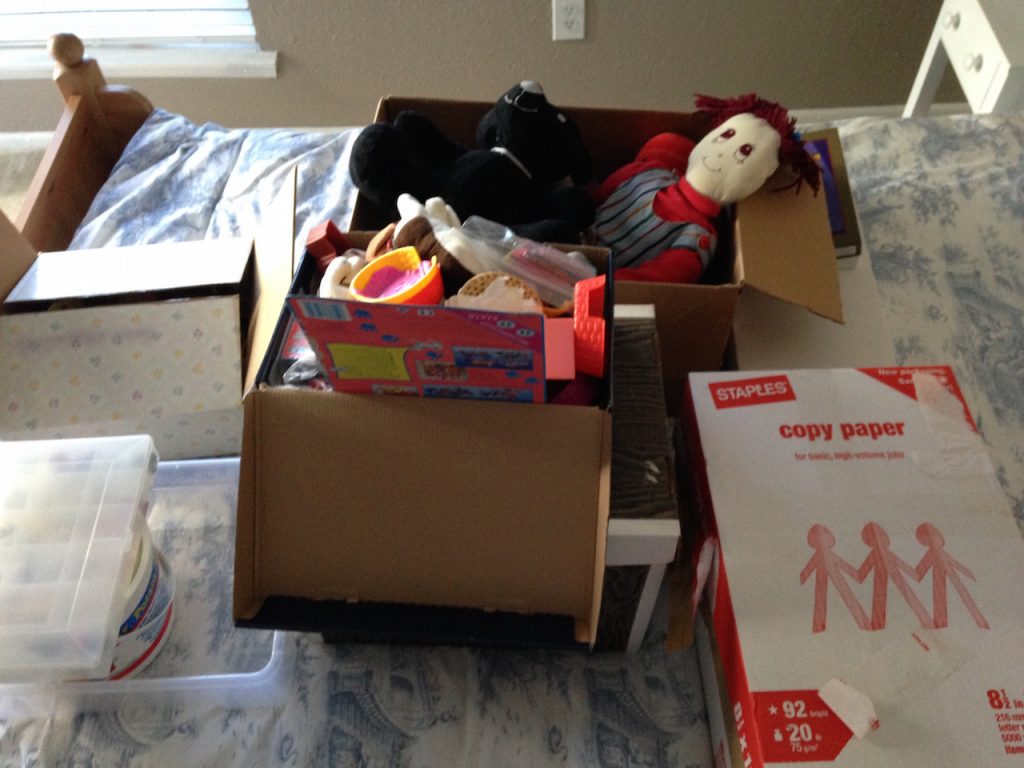
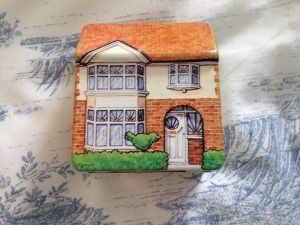
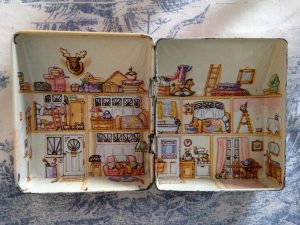
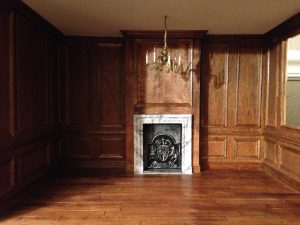
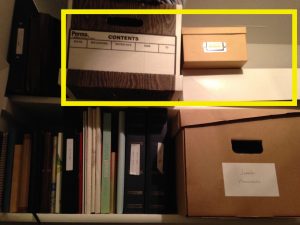
I love your posts 🙂 though I sometimes feel a bit voyeuristic reading them! My personal life kind of swings between clutter and declutter (since I move so much). But every time I move I enjoy giving away things to friends and strangers – I think their joy in receiving it makes it easier for me to part with things. Anyway, the little tin that’s shaped like a house – it’s lovely!
Haha! I guess sharing all my stuff is sharing a lot of my life…but I wouldn’t share what I didn’t want people to read about! Moving definitely does help keep things in check. The amount of stuff I own probably reflects how often I move in each phase of life.
I also really enjoy reading your posts. They are thoughtfully written and have a lovely pace (flow?) to them . I haven’t commented before (and probably won’t again), but wanted you to know that I look forward to checking your blog. 🙂
Thank you for your encouraging comment! I love writing for its own sake, but it’s really good to know that it’s enjoyable to read, as well.